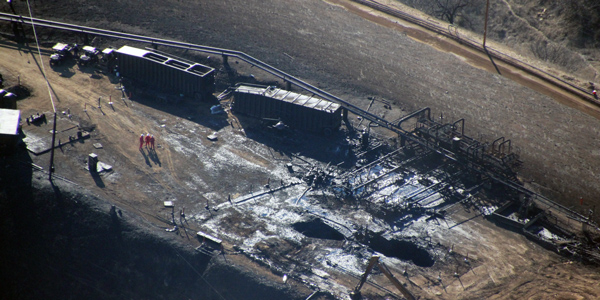By Jason Fordney
California officials Thursday cleared the Aliso Canyon natural gas storage facility to resume injections, even as momentum builds among lawmakers, regulators and the public to permanently close the site of the massive methane escape near Los Angeles.
The methane leak caused by a broken pipe casing at the 86-Bcf storage facility owned by Southern California Gas was discovered in October 2015 and plugged in February 2016.
State engineering and safety officials said that after months of “rigorous inspection,” they “have concluded the facility is safe to operate and can reopen at a greatly reduced capacity in order to protect public safety and prevent an energy shortage in Southern California,” according to the California Public Utilities Commission. State legislation required the PUC and Division of Oil, Gas and Geothermal Resources to clear the facility for operation before gas injections could resume there.
PUC Executive Director Timothy Sullivan said: “After careful review of testing results, our safety teams have confirmed the integrity of the wells at this facility. Out of an abundance of caution and consideration for public safety, storage capacity will be restricted to approximately 28% of the facility’s maximum capacity — just enough to avoid energy disruptions in the Los Angeles area.”
State Oil and Gas Supervisor Ken Harris issued an order laying out testing requirements at the facility after injections resume. About 60% of the wells at Aliso Canyon have now been taken out of operation and isolated from the facility, and remaining wells were cleared during testing, officials said. Active wells now have real-time pressure monitors and will be subject to aerial monitoring. The wells also have new steel tubing and seals.
The finding came the same day the head of the California Energy Commission wrote PUC Chairman Michael Picker, calling for the facility to be permanently closed. He said Gov. Jerry Brown asked him to make plans for the facility to be permanently shut down.
“My staff is prepared to work with the CPUC and other agencies on a plan to phase out the use of the Aliso Canyon natural gas storage facility within 10 years,” CEC Chairman Robert Weisenmiller said in the letter.
Weisenmiller said that closing the facility “is no small task and the recommendation to close the facility is not one that I take lightly or without thoughtful consideration.” But he said reliability worries could be addressed through investing in renewable energy, energy efficiency, electric storage and other tools.
The PUC will continue its proceeding focused on the future of the facility. (See EIM Leaders Endorse CAISO Gas Constraint Measure.)
SoCalGas welcomed the decision in a statement Thursday. The company had warned of reliability concerns stemming from the loss of the facility and in November 2016 requested permission to resume injections.
“Aliso Canyon is an important part of Southern California’s energy system, supporting the reliability of natural gas and electricity services for millions of people. SoCalGas has met — and in many cases, exceeded — the rigorous requirements of the state’s comprehensive safety review,” the company said.
On Wednesday night, State Sen. Henry Stern (D) tweeted that the “proposal to re-open #AlisoCanyon before we know what caused the leak and before earthquake and fire risks studied is premature & unnecessary.”




